Sun 5 Jun 2011
PRIME TIME SUSPECTS: Part 3.1, by Tise Vahimagi — Adventurers (Sleuths Without Portfolio).
Posted by Steve under Columns , TV mysteries[5] Comments
by TISE VAHIMAGI
Part 3.1: Adventurers (Sleuths Without Portfolio)
It has always been accepted generally in television series’ creation that the central character or characters must have a franchise in which to meddle. That is, a seemingly legitimate reason to involve themselves in the lives and affairs of others.
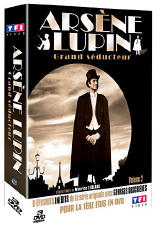
The policeman, the journalist, the private eye, and a whole slew of other publicly accessible/available types are among the ones who have a licence to meddle in the lives of people whose paths they would not otherwise cross.
The adventurer in television Crime & Mystery is quite simply a sleuth without portfolio. These adventurers have the least reason to become involved in the affairs of others (given that, for the most part, their main activities are usually as thief, trickster, rogue-of-sorts, when they are not engaged as journalists seeking a hot story, former military types in search of peacetime thrills, or the extra-wealthy in search of “experiences”).
The adventurer-sleuth has its origins, primarily, in the novels and stories of authors such as E.W. Hornung and Maurice Leblanc, contributors to the Rogue School of crime and mystery literature.
Hornung’s gentleman-thief A.J. Raffles (whose adventures were first published in 1895) was the epitome of the charming rascal. Rather surprisingly, he did not receive a small-screen treatment until British writer-producer Philip Mackie and Yorkshire Television produced a single play, Raffles – The Amateur Cracksman, in 1975.
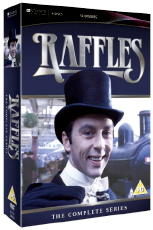
From this play, Mackie and Yorkshire developed the enjoyable 13-episode series Raffles (ITV, 1977) featuring a feline Anthony Valentine. There was also the 2001 BBC single drama, Gentleman Thief, starring the upper-crust Nigel Havers.
French author Leblanc created the Continental equivalent of Raffles with Arsène Lupin, another gentleman burglar. French television, of course, produced the first Lupin series for TV in the 1970s with Arsène Lupin (ORTF2, 1971; 1973-74), followed by Arsène Lupin joue et perd (A2, 1980), Le Retour d’Arsène Lupin (France 3, 1989-90) and Les Nouveaux Exploits d’Arsène Lupin (France 3, 1995-96). A fine (131-minute) feature film, Arsène Lupin, was released in France in 2004 starring Romain Duris and Kristin Scott Thomas.
What may be considered a part of this Early Adventurer-Sleuth Strain was DuMont network’s short-lived The Gallery of Mme. Liu-Tsong (1951), featuring the TV debut of Anna May Wong as the owner of a chain of prestigious art galleries, through the connection to which she conducted her mystery solving.
Both Boston Blackie (synd., 1951-53) and Mr. and Mrs. North (CBS, 1952-53; NBC, 1954) made their appearance around the same period but their rather homegrown adventures were pretty soon overshadowed by the witch-hunt obsessions of the Red Scare, the alleged Communist Menace sweeping America at that time.
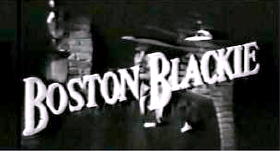
It was inevitable then that Jerry and Pam North ran into a Communist cell in “Jade Dragon” (1953) and Boston Blackie tangled with foreign agents in “Black Widow” (1952) and “Crown Jewels” (1953). (And more about Blackie below.)
The Foreign Intrigue Cycle. Sheldon Reynolds’ Foreign Intrigue (synd., 1951-55), a European-based foreign correspondent adventure that sought out espionage rings in virtually every European city, and which at times evoked the noir qualities of Tourneur’s Berlin Express (RKO, 1948), was persuasive in turning similar adventure-sleuth series into rabid Commie-hunting rallies.
The opportunistic adventurer activities of Dan Duryea’s China Smith (synd., 1952; later as The New Adventures of China Smith, 1954) soon turned from solving insurance scams, murders and kidnappings to skirmishes with Red Chinese agents.
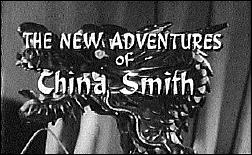
When, in the mid 1950s, the Falcon resurfaced in the shape of Charles McGraw as a syndicated TV series, Adventures of the Falcon (1954-55), the character had lost all trace of the sophisticated gentleman adventurer (of the George Sanders/Tom Conway RKO period) to become a hard-nosed U.S. Intelligence officer working on foreign assignments.
In a somewhat similar vein, the Eastern bloc adventures of anti-Communist journalist Brian Keith in Crusader (CBS, 1955-56) pulled no punches in his free-wheeling life as a writer and adventurer.
[Author’s note on the latter four paragraphs: please refer also to the earlier Part 3: Cold War Adventurers]
In what may be considered Relatives of Raffles, two particular series in the mid 1950s managed to capture the spirit of the television adventurer-sleuth:
Though removed from author Jack Boyle’s 1919 American-hardened version of Raffles, Boston Blackie (synd., 1951-53) was closer to its film interpretations (via Columbia, 1941 to 1949) with Chester Morris as the freelance crime solver than the original story (which, like Michael Arlen’s The Falcon, had only one published story as its basis). Rights holder-producer Frederic W. Ziv had tried a television version of the character as early as 1948 but it was the series starring Kent Taylor that became typical of the TV adventurers of the period.
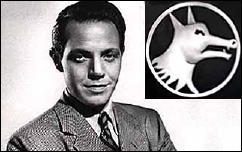
Louis Joseph Vance’s Michael Lanyard (played by Louis Hayward on TV) as The Lone Wolf (synd., 1954-55) was another criminal-turned-adventurous rogue (previously via Columbia Pictures, 1935 to 1949) whose past as an urban outlaw (jewel thief) was put to good use as a globe-trotting crime fighter.
Perhaps one of the more interesting adventure seekers around this time was Dan Holiday, a former newspaper writer who advertised “adventure wanted” in a search for new story ideas. The character and format was developed originally for radio and starred Alan Ladd, who was heard as Holiday in the syndicated radio series Box 13 (produced by Ladd’s Mayfair Productions, 1948 to 1949).
Later, his Jaguar Productions attempted a television pilot; also starring Ladd, the half-hour “Committed” (1954) was shown as a part of General Electric Theatre (CBS, 1953-62). Why CBS Television didn’t pick up a Box 13 series with Ladd remains a mystery in itself.
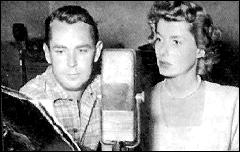
The Bulldog Drummond Breed. And perhaps a final say in this overextended “footnote.” Military men in search of peacetime excitement was the basis for popular works by authors such as Sapper (H.C. McNeile), with his Hugh “Bulldog” Drummond, and for John Buchan, with Richard Hannay. Geoffrey Household’s upper class outdoor adventurers would follow later.
Sadly, television also failed to pick on a Bulldog Drummond series in the mid-1950s when Fairbanks Jr., as executive producer of the anthology Douglas Fairbanks Jr. Presents (ITV, 1956-57), produced the energetic “The Ludlow Affair” (1956; aka “Bulldog Drummond and The Ludlow Affair”). The production starred Robert Beatty as the thrill-seeking Drummond (who, in Sapper’s original work, also advertised for a “diversion” to his uneventful post-war life).
From a purely literary perspective, perhaps the lineage of the adventurer may be traced back to Rudolf Rassendyll (of The Prisoner of Zenda fame) and Sir Percy Blakeney (of The Scarlet Pimpernel)…?
Note: The introduction to this series of columns by Tise Vahimagi on TV mysteries and crime shows may be found here, followed by:
Part 1: Basic Characteristics (A Swift Overview)
Part 2.0: Evolution of the TV Genre (UK)
Part 2.1: Evolution of the TV Genre (US)
Part 3.0: Cold War Adventurers (The First Spy Cycle).
June 6th, 2011 at 8:32 pm
It’s all a matter of location, I’m sure, but the small TV station in the upper corner of Michigan’s lower peninsula, where I grew up, didn’t carry any of these series.
In fact, reading through Tise’s “footnote” again, I don’t believe I’ve seen a single episode of any of them, though quite a few are available on the collector-to-collector market.
That series with Dan Duryea, CHINA SMITH, sounds very intriguing, if you’ll forgive the pun. I think I’ll go looking.
June 6th, 2011 at 9:38 pm
I grew up in a small town in Kansas during the late fifties and sixties (born 1954). We had two TV stations for much of that time. One station showed CBS while the other showed a mix of NBC and ABC.
So ignoring the many syndicated series that never made my area, I missed many of the ABC shows as well.
Of course, the major reason I missed the first run of these early TV series was I was outside playing with friends. “Luckily” the kids today will always remember spending their youth before the TV.
June 7th, 2011 at 9:34 pm
Speaking of CBS missing a bet by not picking up BOX 13 as a TV series, I have found one source that says that:
“Ladd reprised his role as Dan Holiday on television, adapting the radio episode, “Daytime Nightmare” as an episode of the of the G.E. True Theater, “Committed.””
This is taken from a post titled “The Five Best Syndicated Old Time Radio Detective Shows.”
http://www.greatdetectives.net/detectives/syndicated-time-radio-detective-shows/
and is well worth your while checking out.
June 8th, 2011 at 10:36 am
Steve, that post was one in a series featuring each network. It is one of the best sites for those interested in OTR.
June 8th, 2011 at 8:29 pm
I suspect that Not Invented Here might’ve played a role in Paley not picking up the Ladd series.
Anna May Wong. Sigh.